From decadent to effervescent, these wines are seasonal must-haves.
No holiday is complete without a bottle of wine (or three). Whether they’re tried-and-true favorites, new selections or special vintages, keeping a few go-to varietals on hand is a delicious way to enhance your dishes and add a touch of warmth to any gathering.
Ready for a taste? Here’s an overview of five wines that are extra-versatile and a pleasure to sip: Prosecco, Chardonnay, Rose, Pinot Noir and Cabernet Sauvignon.
Prosecco
This sparkling Italian white wine is made from the Glera grape, which dates back to Roman times. The name “Prosecco” comes from the Italian village near Trieste in northeastern Italy, where the grapes may have originated. Often described as intensely aromatic and crisp, Prosecco boasts flavors of yellow apple, white peach, pear and apricot. We recommend serving it well-chilled or mixing it into a refreshing wine cocktail, such as a Bellini, Mimosa or our own holiday favorite, the Poinsettia.

Pro Tip: Never remove your thumb from the top of the cork while opening. Remove the foil from the bottle, place your thumb over the mushroom cork and remove the cage. Then gently turn the bottle from the bottom, holding the cork firmly until it opens with a festive pop.
Food Pairings: Prosecco is often served as an aperitif but also pairs beautifully with seafood, spicy cuisine or dessert. If we had to sum it up in two words, Prosecco goes best with “party food” and is a delicious way to celebrate the season!
Fun Fact: Prosecco’s secondary fermentation takes place in stainless steel tanks instead of in the bottle which make it more affordable and accessible to the world’s population. In addition, this means less contact with the “lees” or yeast sediment, allowing for a lighter, fruitier taste profile.
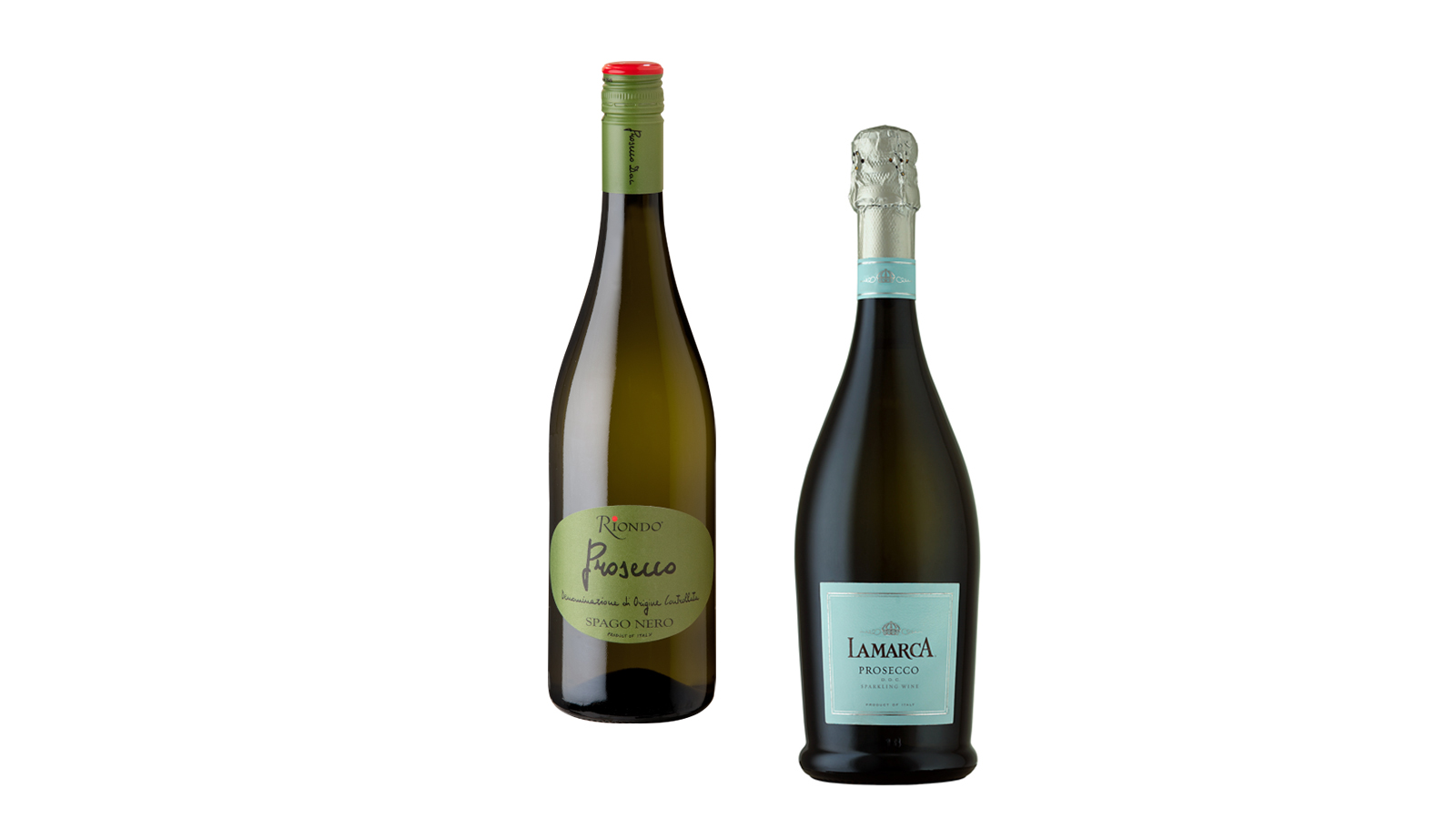
Our Favorites:
Riondo Prosecco - This sparkling wine boasts fresh aromas of Golden Delicious apple, pear, and acacia blossom. Its persistent effervescence is followed by a crisp, clean finish. While delicate and fruity on the palate, this prosecco is the perfect choice to either sip by itself or mix to make a bubbly cocktail.
La Marca Prosecco - The Glera grapes used to make this wine come from the La Marca Trevigiana zone in the heart of Italy’s lush Prosecco region. Golden-straw in color, La Marca is delicately flavored with lively effervescence and aromas of fresh citrus, honey and white flowers. The palate is fresh and clean with ripe lemon, grapefruit and green apple framed by mineral undertones.
Three Ways to Dress Up Your Bubbly
- Drop a couple of berries, pomegranate arils or a Luxardo cherry into your drink for a pretty pop of color.
- Add a twist of lemon (use a channel, peeler or knife to cut a thin strip of the peel and then twist it into a corkscrew shape with your fingers).
- Place a wild hibiscus flower in your glass—not only do they look beautiful, but they also have a delicious sweet-tart flavor.
Time to Sparkle
What better time to sip on something sparkling than New Year’s Eve? Our bright Blueberry Champagne Spritzer features blueberry simple syrup that’s easy to make and lasts in the refrigerator for up to three weeks. Our two-ingredient Sparkling Honey Ginger Prosecco is always a hit, and our Sparkling Elderflower Spritzer is equal parts pretty and palate-pleasing.
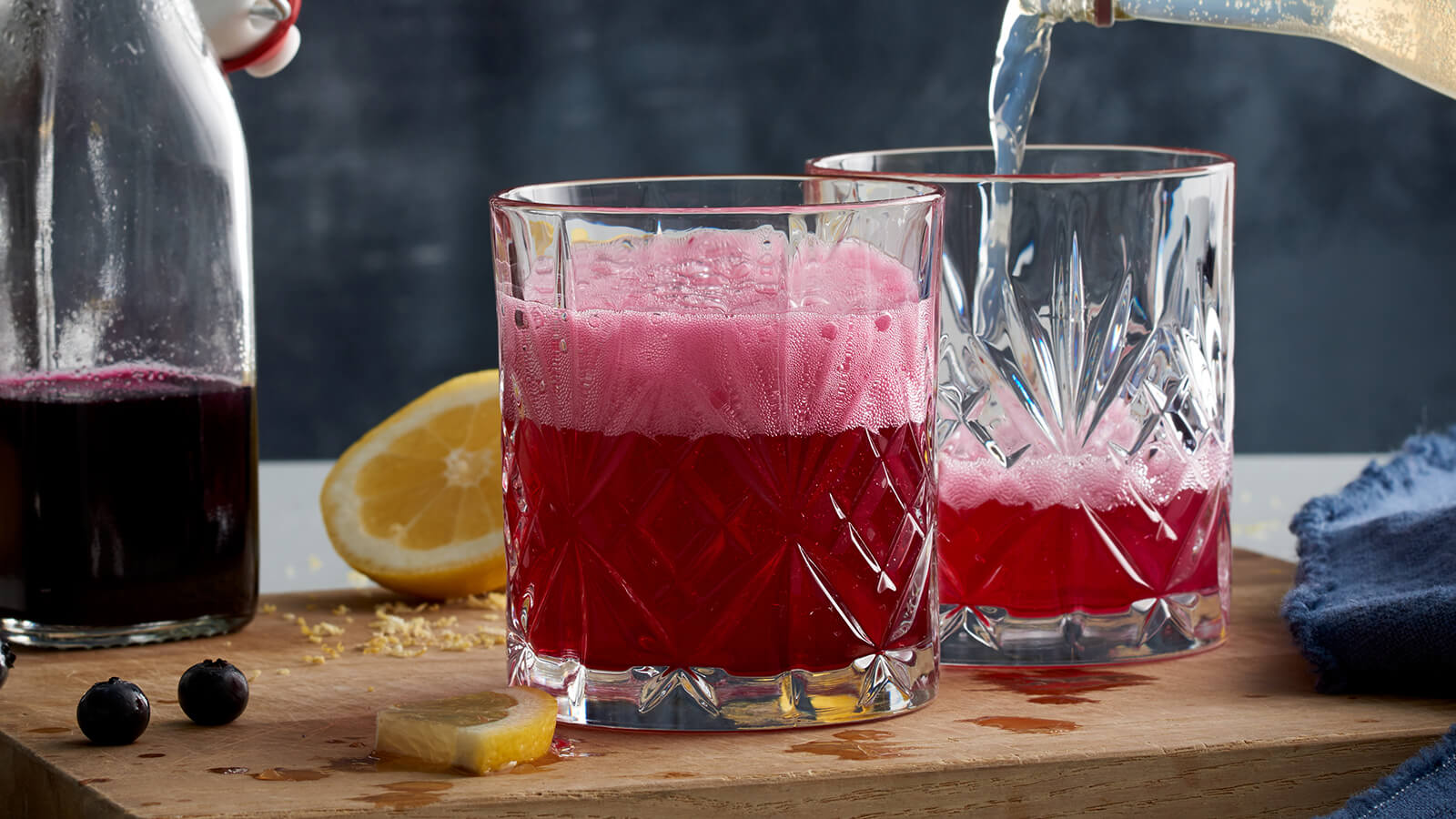
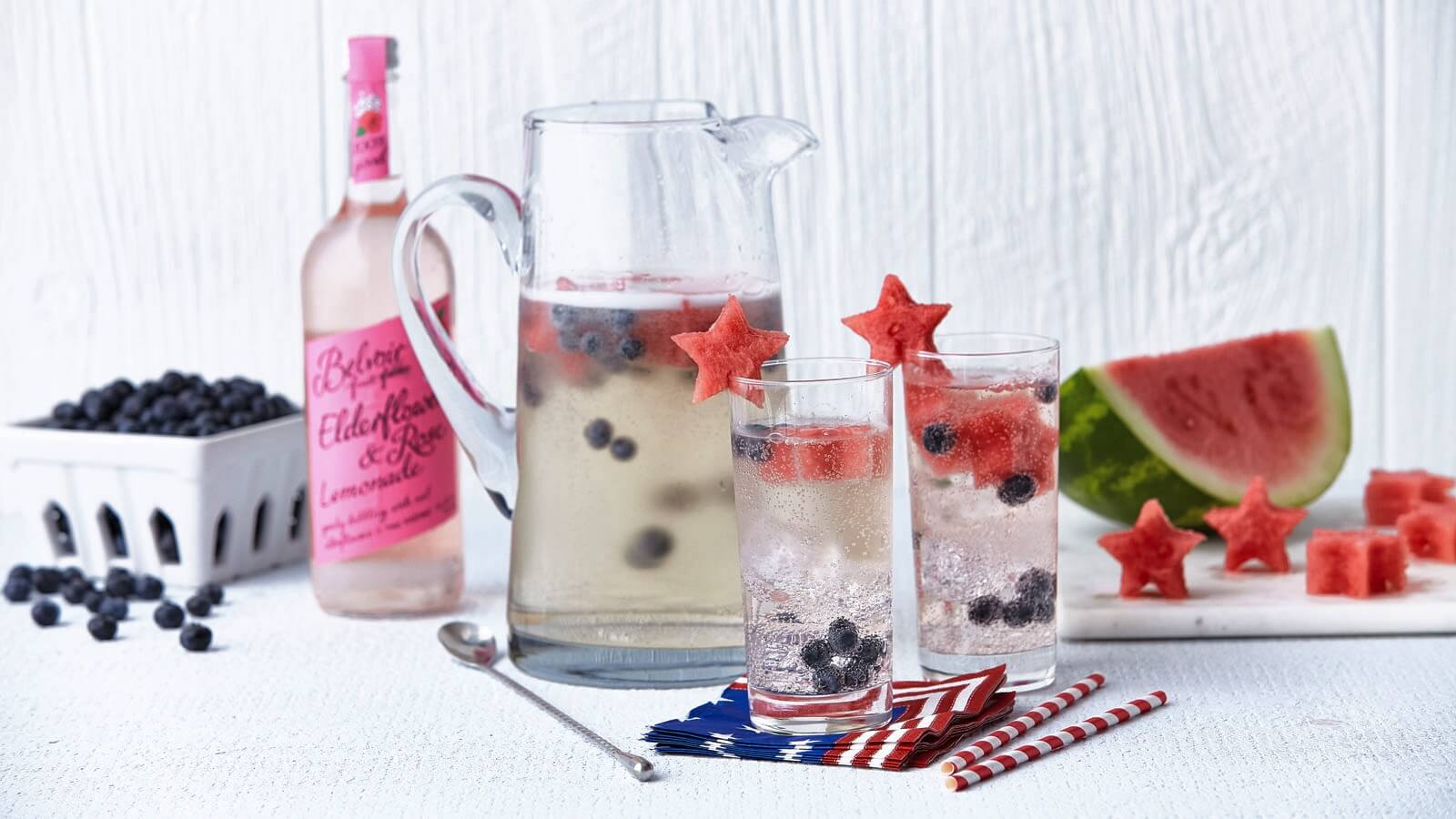
Chardonnay
Originally from the Burgundy region of France, Chardonnay is now grown everywhere from California to New Zealand. The green-skinned grape itself is very neutral, with most of its flavor nuances stemming from terroir (i.e. a specific region's climate, soil and terrain) and oak. Chardonnay aged in stainless steel tends to have flavors of green plum, apple and pear with crisp, mineral tones, while Chardonnay aged in oak barrels takes on fuller-bodied characteristics with tropical fruit flavors and a rich, buttery mouthfeel.
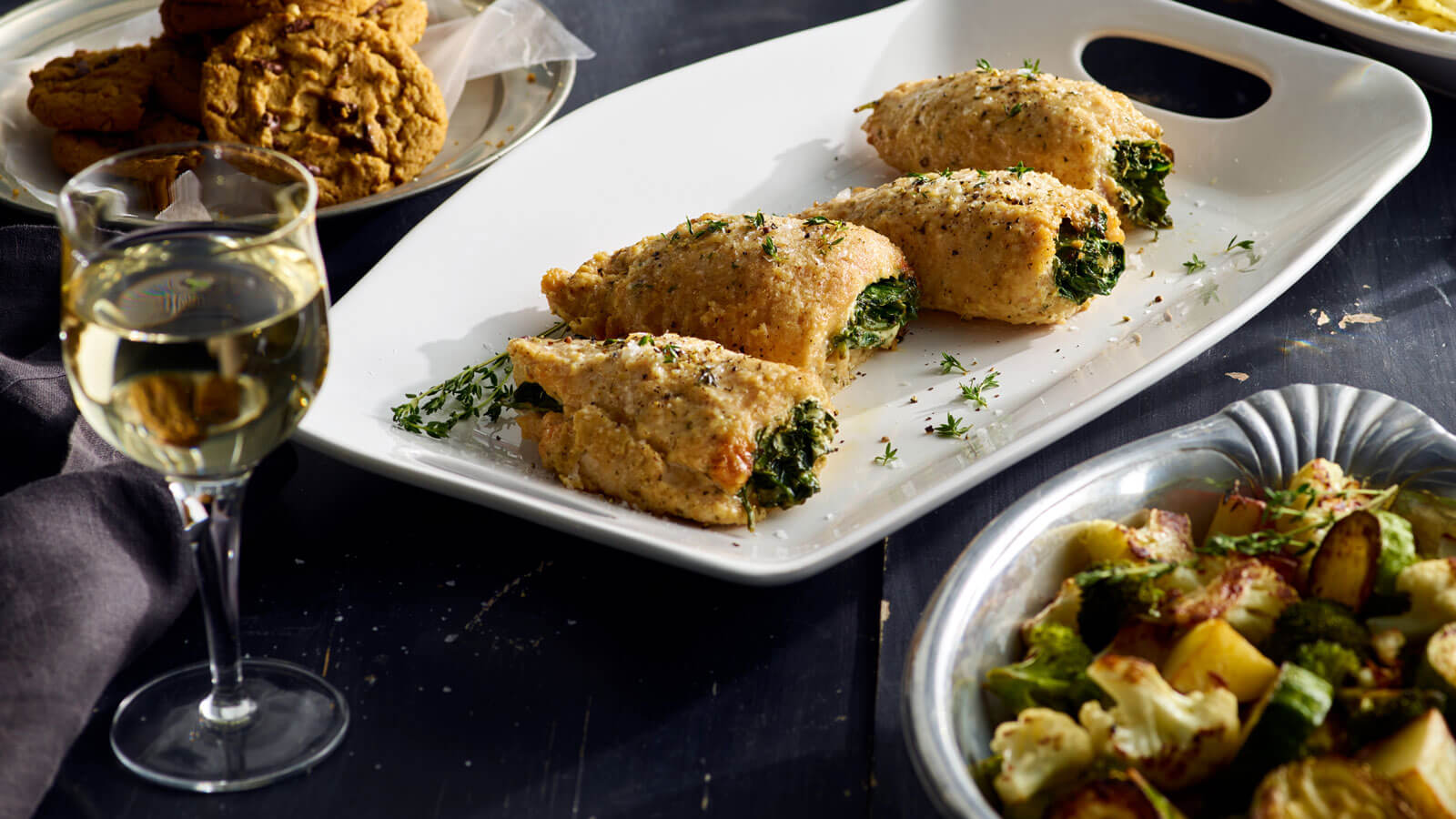
Pro Tip: Remove Chardonnay from the ice bucket or refrigerator approximately 15 to 20 minutes before pouring to let it warm up to about 48 degrees. This will allow the aromas and flavors to best express themselves.
Food Pairings: Pair your favorite Chardonnay with recipes that include creamy sauces, meaty fish or shellfish, simply-seasoned poultry, pork dishes or roasted vegetables.
Fun Fact: Chardonnay is the most popular grape variety in the United States and the most widely planted white wine grape across the world. Americans consume over 840,000 bottles per year!
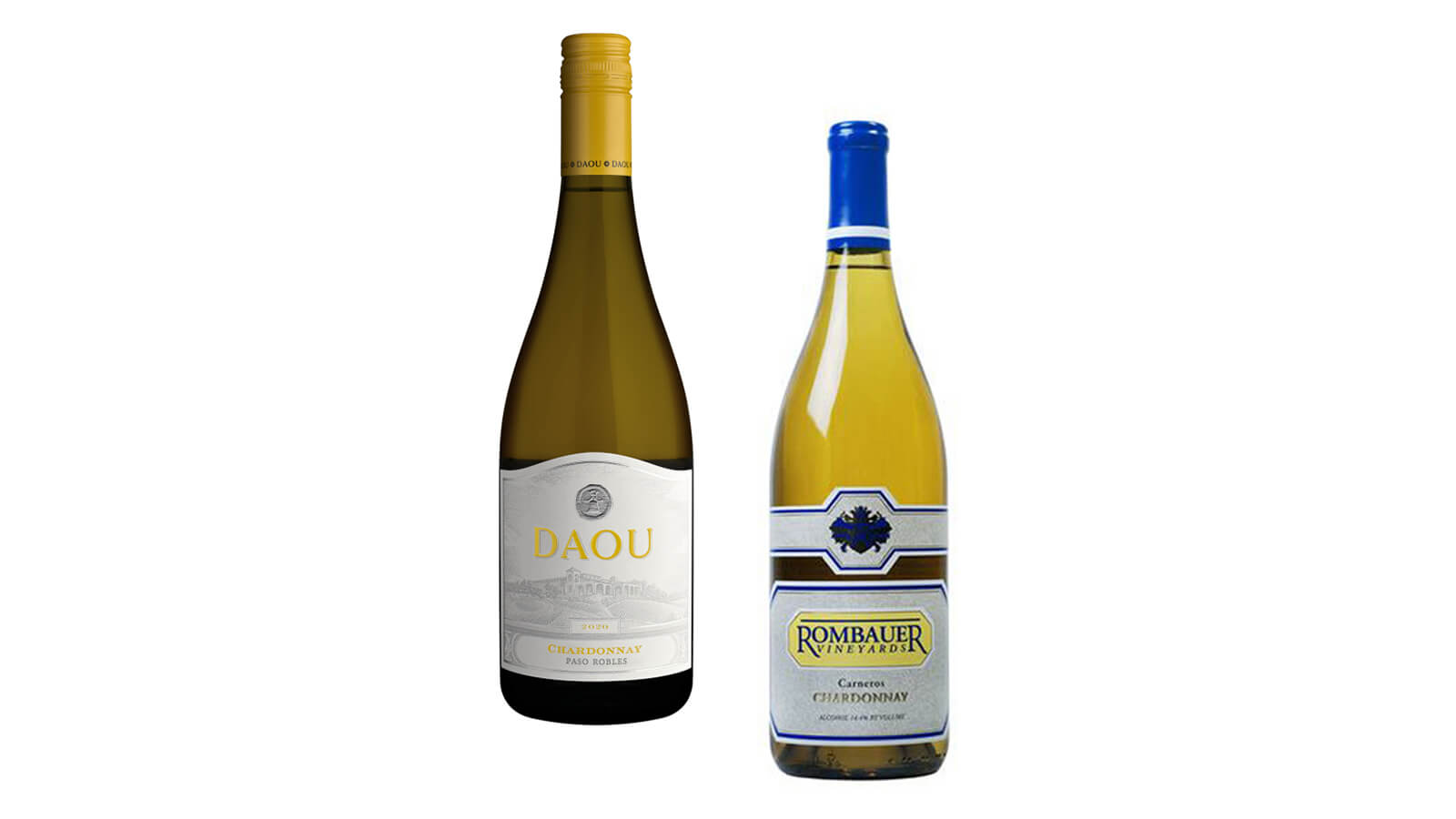
Our Favorites:
Daou Family Estates Bodyguard Chardonnay - Elegant and silky on the palate, this Chardonnay offers delectable peach, melon, and green apple flavors accentuated by tropical notes of mango, guava, pineapple, and kiwi. A clean, exceptionally balanced finish is rounded out with essences of sweet Crenshaw melon, nectarine and papaya.
Rombauer Chardonnay - Another favorite from a family-owned winery, this elegant Napa Valley Chardonnay boasts enticing aromas of melon, mango and vanilla layered with butter, apricot and toasty oak. On the palate, Rombauer Chardonnay is rich and creamy, with an irresistible hint of spice. The aftertaste is citrusy and smooth, with a lingering, mouthwatering finish.
Rosé
Despite what some may think, the characteristic pink hue of rosé wine doesn’t come from a blend of red and white. Winemakers craft rosé by juicing red grapes and then allowing the juice to soak with the skins for a few days. Once the juice takes on a lovely pink color, the skins are removed and the juice is allowed to ferment. As far as the flavors and aromas of the wine itself, rosé can be very dry or fairly fruity depending on the region and winery. The fruit flavors often include cherry, strawberry and raspberry with some citrus and watermelon.

Pro Tip: Look for rosé made from your favorite red wine grape. Nearly every major wine region in the world makes rosé, with grapes ranging from Tempranillo to Pinot Noir to Cabernet Sauvignon.
Food Pairings: When it comes to food pairings, rosé wines are extremely versatile. Try them with light salads, sandwiches and wraps, salmon or grilled chicken.
Fun Fact: Rose, unlike red wine, does not improve over the years so don’t get any ideas about hoarding it on your wine rack or in your cellar. This wine is meant to be drunk young and fresh so look for vintages in the current year but not more than two years back.

Our Favorites:
Château de Esclans Whispering Angel Rosé – This crisp, creamy wine is intensely fruity, with hints of lemons, cantaloupe, orange peel and peaches. It’s Medium-bodied with hints of tannins and bitterness.
Mumm Napa Brut Rosé - Luscious and festive, this sparkling wine from Napa Valley, California has a light pink color and is made primarily from Pinot Noir grapes. A portion of the wine is initially fermented in the press, giving it soft, fruity characteristics, while a hint of Chardonnay creates a balanced structure. Notes of black cherry and strawberry are followed by graham cracker and mineral flavors leading to a crisp, dry finish.
Pinot Noir
Pinot Noir is one of the oldest grapes in the world—more than 1,000 years older than Cabernet Sauvignon. It dates back to the 1st century when monks cultivated the grape in the Burgundy region of France. The name “Pinot Noir” comes from the French words for “pine” and “black,” as the grapes are very dark in color, with bunches of them resembling pine cones. Pinot Noir grapes produce dry, fruit-forward wine with earthy layers. The grapes are notoriously difficult to grow, making a good bottle something worth coveting.
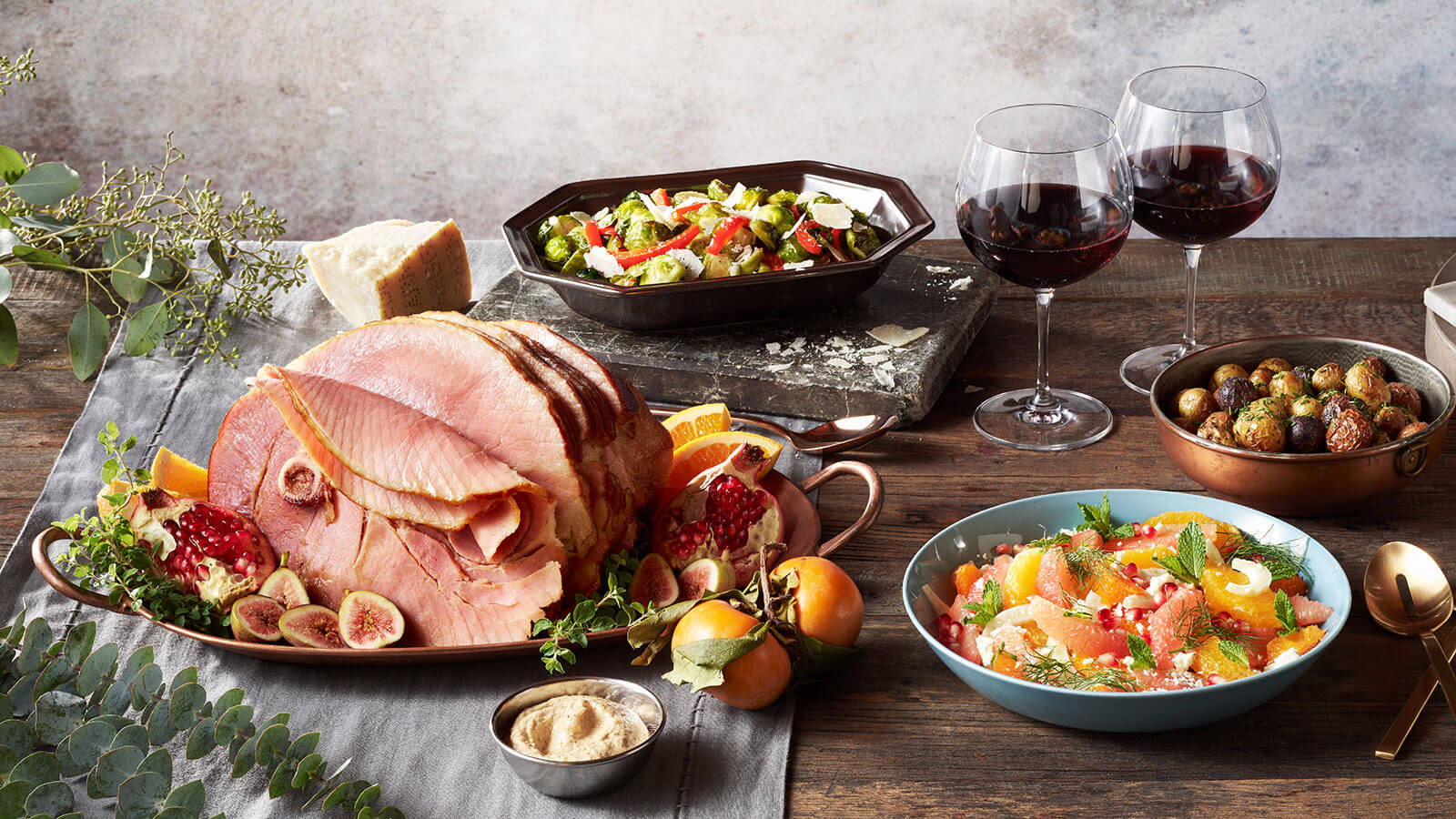
Pro tip: Enjoy Pinot Noir in a large, round, bell-shaped glass. This shape helps collect the delicate aromas of Pinot Noir and enhance the overall drinking experience.
Food pairings: Pinot Noir is one of the most versatile red wines for food pairing. Try it with simple meals like pizza or with chicken, salmon or richer meats. It’s also an ideal wine for Christmas dinner as it pairs nicely with ham, turkey and a variety of flavors.
Fun Fact: Pinot Noir is nicknamed the “heartbreak” grape because it is thin-skinned and susceptible to all sorts of disasters in the vineyard. Small climate changes greatly affect ripening and can alter the taste profile, it is prone to disease and oxidizes easily in the winemaking process. It is a much riskier wine for both growers and winemakers than other popular reds.
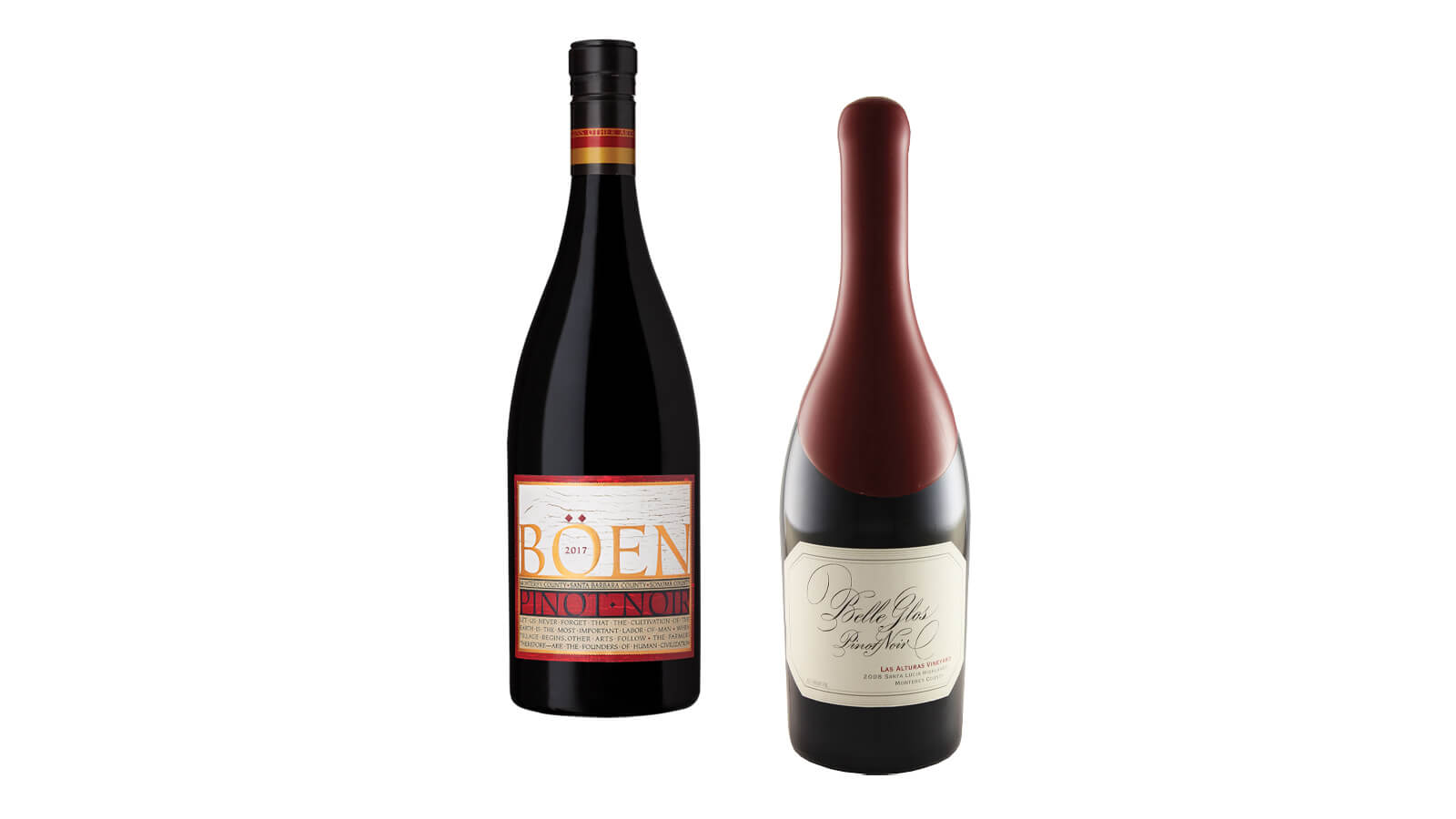
Our favorites:
BÖEN Tri County Pinot Noir - Made using grapes from Sonoma, Monterey and Santa Barbara Counties, BÖEN’s luxurious Pinot Noir is bright, rich and supple with ripe fruit flavors and the perfect amount of toasty oak. berry notes blend beautifully with cranberry, cinnamon and red plum in this bright, ruby red Pinot Noir with soft tannins.
Belle Glos Las Altaras Pinot Noir - This Pinot Noir possesses a broad texture, deep, sweet fruit, earthy, black raspberry, cherry, and red currant aromas, and beautiful purity as well as a seamless finish.
Cabernet Sauvignon
Grown in nearly every major wine-producing country, Cabernet Sauvignon is one of the world’s most widely recognized red wine grape varieties. It tends to be full-bodied, with notes of black cherry or black currant, high tannins and noticeable acidity that contribute to its aging potential. Cabernet Sauvignon responds exceptionally well to oak, which softens tannins and brings out gorgeous flavors of vanilla and spice that complement the rich fruit.
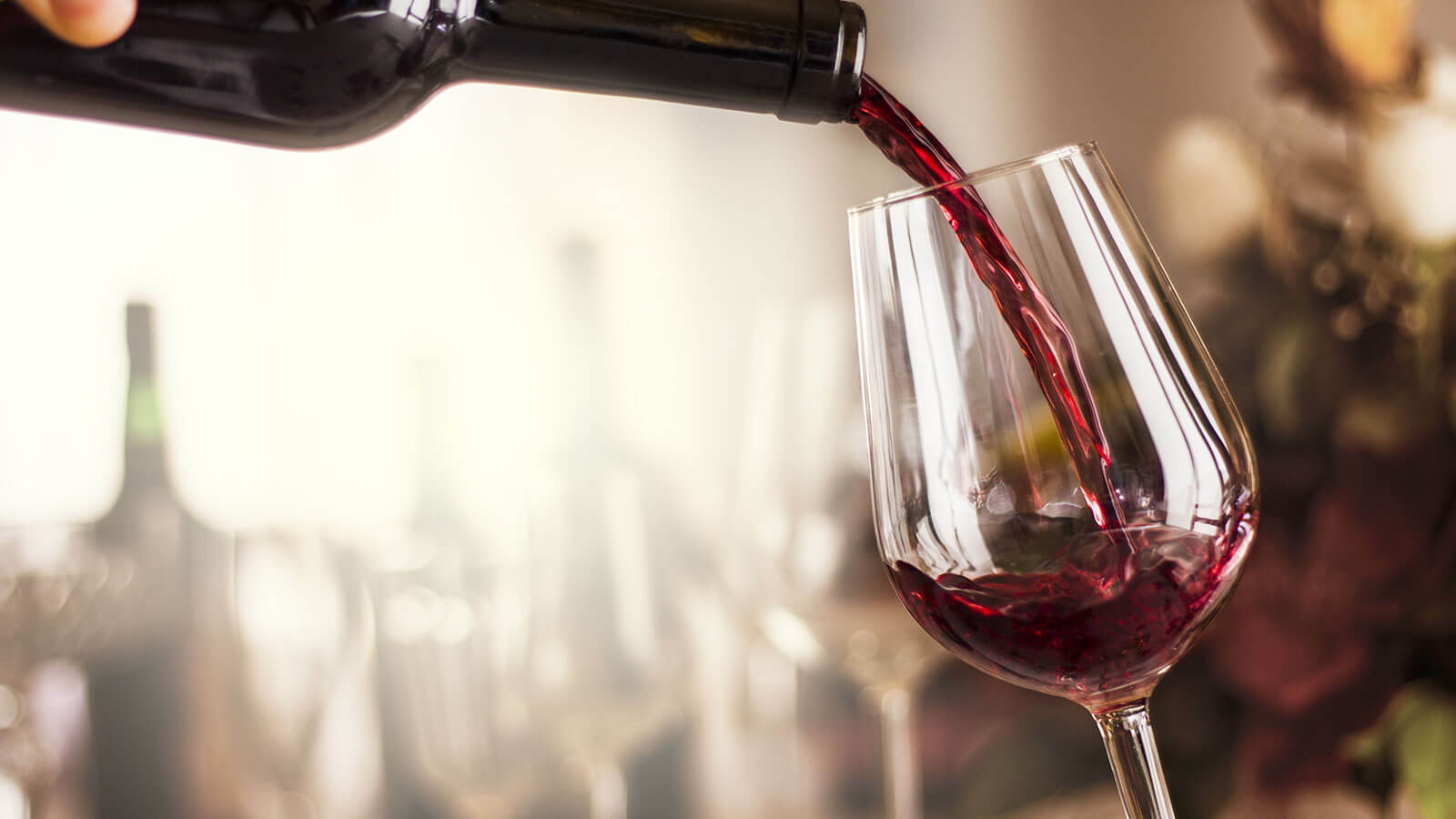
Pro tip: Before serving, open the bottle of Cabernet Sauvignon and allow the wine to breathe for 15 to 20 minutes. Use large red wine glasses to allow ample room to swirl and aerate the wine enhancing the aromas and flavors.
Food Pairings: The classic pairing with Cabernet is steak or lamb, but it pairs nicely with almost any meat (including roasts, duck and pork) as well as aged cheeses and mushroom dishes.
Fun Fact: Cabernet Sauvignon tastes great with steak and there’s a reason why! Researchers studying the interaction of food in the mouth found that the grape tannins in Cabernet bond with fat molecules that collect on your tongue and release flavor. You end up with tannin in the wine softening the steak and the fat in the steak softening the wine. A perfect marriage!
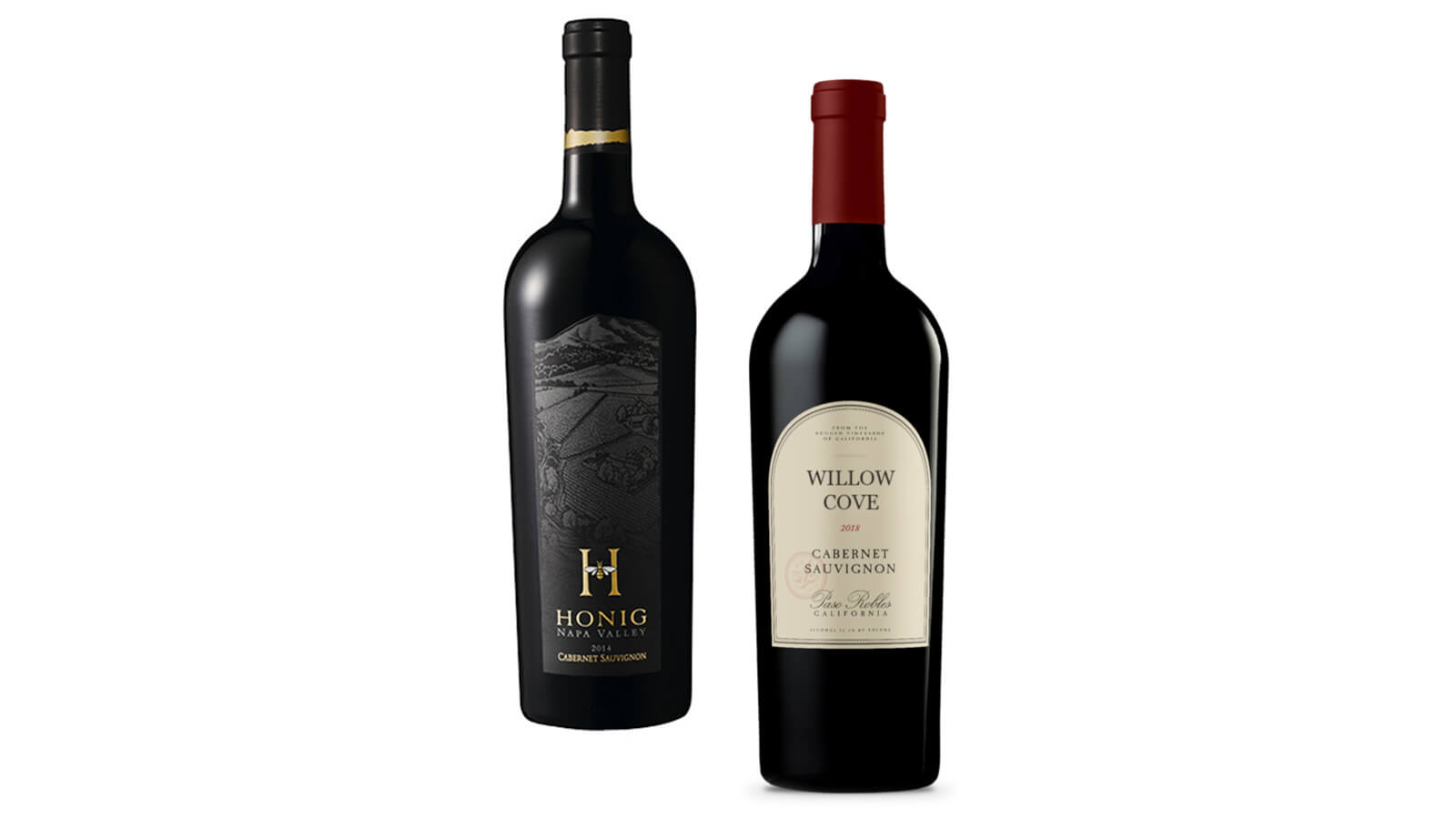
Our favorites:
Honig Napa Valley Cabernet Sauvignon - Full-bodied, luscious and balanced, this Cabernet is rich with flavors of red plum, blackberry, toasty oak and spice. It’s rich and inviting, and pairs beautifully with meats and seafood.
Willow Cove Paso Robles Cabernet Sauvignon - Willow Cove is made in Paso Robles, a diverse wine region that to this day is considered the industry’s “wild west.” This wine has aromas and flavors of black licorice, black cherry, raspberry and vanilla.
